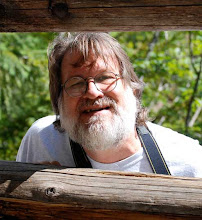What Happened to My Body?
Joanie Thurston’s life changed radically the night she almost died in Portland. Yours would too if what happened to her happened to you.
Exhausted beyond prudence from a day at work that had stretched well into the night, Joanie left her office at 3:55am. On her way home, she fell asleep at the wheel.
“What are the odds that my car would turn the corner at SE Lincoln and SE Grand, merge into traffic, drive five blocks in the right lane, turn sharply and hit a light pole before I killed someone? What are the odds that others would witness my being asleep at the wheel and call 911 before the crash happened?”
In her new book Possible Fatal, Joanie describes how she hit the steering wheel with such force it crushed her chest and propelled her consciousness out of her mangled body and into the night sky over the Rose City. She explored a personal Wonderland until light beings insisted that she wasn’t done living her Joanie life. WHAM—slammed back into her body and its excruciating physical pain.
A classic near-death experience (NDE) like Joanie had is not a metaphor for a close brush with death. It’s not like narrowly missing a collision with another car and thinking, “Whoa, I nearly lost it.” An NDE is usually a medical phenomenon. The pulse ceases and the person flatlines, although the person might not be hooked up to machines.
Yeah, you can argue that someone didn’t actually die if that person came back to life. Yet millions of people have taken the journey outside their bodies, often finding themselves in different realities than what science asserts is “real reality.” If they didn’t in fact die, they experienced something that isn’t taught in schools about the nature of life.
Many of the books covering near-death experiences that came out in the 1970s and 80s touted the magic and wonder of paradise beyond earth. The newly dead pass through a tunnel into a world of light where they are ushered into castles in the sky, gardens literally to die for, and gargantuan museums that put the Smithsonian to shame. They meet ancestors and old friends who’ve died and have incredible life reviews. Often they meet light beings whom the writer often perceives as Jesus or God.
Current research has expanded the vision well beyond these early works. Many victims don’t see tunnels or light beings. Many don’t get life reviews. Many end up feeling ashamed that they experienced something hellish or an out-of-body void. Like Joanie, many others resent being denied access to paradise and being slammed back inside a pain-racked body to deal with it.
The jury may still be out on exactly what these people experience, but something profound happened to them. Their perceptions have been wildly stretched beyond normal boundaries. They have visited other dimensions and no longer accept the version of reality pumped through our news organizations.


1 Comments:
I've known Joanie for years and the book she wrote is simply mind-altering. Fascinating reading for everyone, believers and nonbelievers. It took a lot of courage for her to share her after-death journey, but even more courage to share her past - the pain and the joy.
Sheri
Post a Comment
<< Home